World War 2.5 – Gaming An Alternate History [Part One]
February 16, 2015 by crew
Backstage Rules Pack Download
There’s an old saying: “The enemy of my enemy is my friend.” But is that always true? Consider the delicate and uncertain partnership between the “Allies” during World War II. There was open gunfire between the British and French, and jagged mistrust between the British and the Americans. Even Americans and French engaged in full-fledged battle when US troops first encountered Vichy garrisons in North Africa.
All of this paled, however, compared to the paranoia and animosity simmering between the Western Allies and Soviet Russia. These are factions that would have been happy to go to war with each other, if the Third Reich hadn’t been standing between them. Perhaps it’s a fitting measure of Hitler’s evil that he managed to get men like Roosevelt, Churchill, and Stalin around the same table, striving for his downfall.
But what if this alliance hadn't held?
“World War 2.5” is a project that postulates what might have happened if a “hot war” had broken out in Central Europe in the near-immediate aftermath of World War II. Maybe the Potsdam Conference went badly, maybe the 1948 Berlin Airlift was forcibly opposed by the Soviets? Maybe Winston Churchill remained in office and his anti-Bolshevik belligerence triggered an incident. Maybe Patton didn’t die in that car crash, and his blustering about settling accounts with the “mongol Russians” sparked the fateful conflagration. Maybe Stalin’s paranoia got the best of him after Hiroshima and Nagasaki, and he decided to strike before the Americans could build a viable nuclear stockpile.
Of course, we’re not saying such a war was likely, or could have happened at all. Nor are we forwarding a specific reason “World War 2.5” might have started, such questions are not in the scope of this project. Suffice it to say that it’s the summer of 1946 and somehow or another, the unthinkable has happened in Germany and the Soviets have reached a point where they “have no choice” but to strike. The Soviet armies that just liberated Mother Russia and stormed the Reichstag are now pitted against men who landed at Normandy. World War “2.5” has begun.
Naturally, it would take more than a few articles to properly envision the totality of such a nightmare scenario so we’ll just focus on part of the air-ground war in central Germany, where four Soviet “Fronts” (roughly equivalent to a western “Army” or “Army Group”) will deliver the main Soviet strike. Their objectives are to achieve a breakthrough, push on the industrial heartland of the Ruhr, and perhaps even cross the Rhine. This axis of attack is no accident, landing at the junction between the US occupation zones of Hesse and Bavaria in the south, and the British occupation zones in Westphalia and Lower Saxony to the north. Of course, this also gives us the opportunity as gamers to put our post-war Soviets up against both post-war Americans and post-war British.
Within this proposed campaign area, we find our Soviets facing off against General Hodges’ US First Army (12th Army Group) and General Dempsey’s British Second Army (part of the newly-formed British Army of the Rhine). The French First Army is also deployed further back in their Rhineland occupation zone, and there are even a handful of small re-armed West German units. Perhaps these are the nascent beginnings of what will eventually become the “Bundeswehr,” their creation accelerated by the impending threat of our scenario.
The date is June 1, 1946. The Soviet offensive begins. To the north, ten Soviet divisions drive on Hamburg, aiming for Bremen, the Danish border, and perhaps the mouth of the Rhine. To the south, two more fronts invade Bavaria from Czechoslovakia, while a small operational group drives into Austria and Italy from Hungary and Yugoslavia. These are just holding actions, however, designed to prevent reinforcement against the main Soviet strike in central Germany, delivered through corridors ranging from Hannover in the north to Nuremburg in the south. Meanwhile, still more Soviet forces surround the Allied garrisons in West Berlin, which the Soviets promise will be exterminated without mercy if the Americans dare reach for their very small stockpile of atomic weapons.
As big as it is, the Soviet Army has of course suffered terrible losses in World War II, and so cannot simply roll across Germany in a “Red Steamroller.” Likewise, the American and British have drawn down their “citizen armies” to a fraction of their 1945 levels, compelled by popular opinion and exhausted economies. Not only were these considerations baked into the campaign for plausibility reasons, but also to keep the game manageable and allow more room for manoeuvre.
Of course we’re not playing everything on the divisional scale with hex grids and counters. Sooner or later we have to “get down in the dirt” and engage in eyeball-to-eyeball combat. Accordingly, we decided to try out the great “Battlegroup” system (as in “Battlegroup Kursk” from Iron Fist Publishing) to run our 15mm tabletop games. Granted, we've had to come up with some of our own data cards, army lists, and scenarios since Battlegroup doesn't have a “1946” campaign book, but the system is amazing and highly recommended.
For our first miniatures battle, we decided to recreate a small portion of the “Fulda Gap Breakthrough” described in the map above. Here, elements of American “Combat Command A” of 7th Armoured Division tries to hold the spearhead of Soviet guards armour while heavier American tanks of 2nd Armoured Division rush to reinforce their comrades.
The Soviets came in from the northeast, with a platoon of post-war IS-3 (Stalin 3) heavy tanks pushing up on the right wing, three SU-100 tank destroyers pushing up on the left wing, and a reinforced platoon of infantry up the central road. This infantry was supported by an immense ISU-152 assault howitzer, which the Soviets hoped to use to suppress American infantry positions. This was especially vital since this scenario envisioned the Soviets as a vanguard “breakthrough force,” already pushing deep into American lines and perhaps out of range of their own supporting artillery.
Admittedly, I’m still something of a novice when it comes to the Battlegroup system but already I love how it can create great narrative moments on the table top. One such moment came when the Soviet IS-3s tried to outflank the American screen of M24 Chaffee light tanks, and the first IS-3 was wrecked by some incredibly lucky American bazooka teams. When you lose a unit in Battlegroup, you have to reach into a pot and blind-draw a counter which tells you how many “Battle Rating” points your battle group has just lost. But there are also “special counters” in the pot, and sure enough, the Soviets drew a “Beyond the Call of Duty” counter which allowed another of their IS-3s to take an extra order (in this case, a double-shot “Open Fire” order).
So even as the first IS-3 burned, the second enraged crew was putting down a hideous, superhuman amount of firepower, pretty much mangling the whole American left wing. When the Americans drew their required counters for unit destruction, they drew a “Break Down” counter (which you play on enemy units, in this case the runaway IS-3). However the IS-3 crew rolled a “1” on the Breakdown Table, which allowed theses “Heroes of the Soviet Union” to keep driving despite the clanking noise. “You been drinking our brake fluid again, Yuri?”
The Americans were getting some lucky breaks as well. To the south, their 76mm-armed Shermans shot the SU-100s tank destroyers to bloody ribbons, firing from under cover in a small German farmyard. One of the surviving M24 Chaffee light tanks managed to get around the side of the ISU-152 assault gun (after it had “Broken Down” as well), and eventually took the beast down with flanking fire. Things really seemed to be turning around when the three American M26 “Pershing” heavy tanks arrived, perhaps at last providing a counter to the Soviet IS-3 heavies.
Fortunately for the Soviets, they finally started rolling the required 5+ for the arrival of their air strikes. The first IL-2 “Sturmovik” ground attack plane took out the lead Pershing, a second Pershing falling to one of the IS-3s (even as an IS-3 blew up when hit with a Pershing’s 90mm gun). The final Soviet air strike eventually took out the last Pershing, effectively winning the game for the Soviets. Although this vanguard has been mauled beyond repair, it seems they have kicked open the door for follow-on forces and the Soviet advance through the Fulda Gap can continue.
How do you like our “World War 2.5” campaign so far? Comment below with questions and more then check back when our next article publishes to see how the British are doing in the north.
The Series:-
- Part One: The Floodgates Open
- Part Two: The Big Push
- Part Three: Valiant Heroics
- Part Four [Finale]: The End?
If you would like to write an article for Beasts of War then please contact me at [email protected] for more information!
"Perhaps it’s a fitting measure of Hitler’s evil that he managed to get men like Roosevelt, Churchill, and Stalin around the same table, striving for his downfall..."
Supported by (Turn Off)
Supported by (Turn Off)
"Of course we’re not playing everything on the divisional scale with hex grids and counters. Sooner or later we have to “get down in the dirt” and engage in eyeball-to-eyeball combat..."
Supported by (Turn Off)
































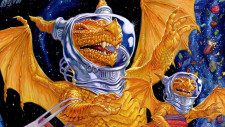

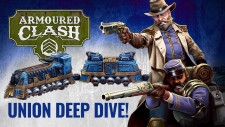






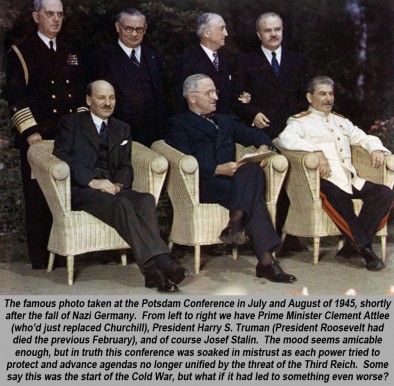
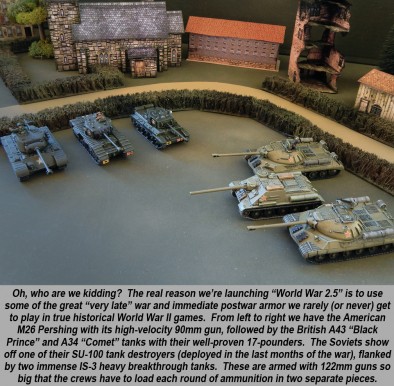
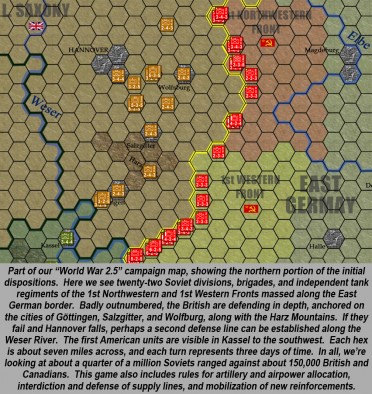
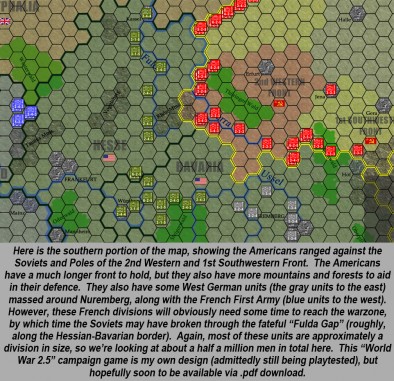


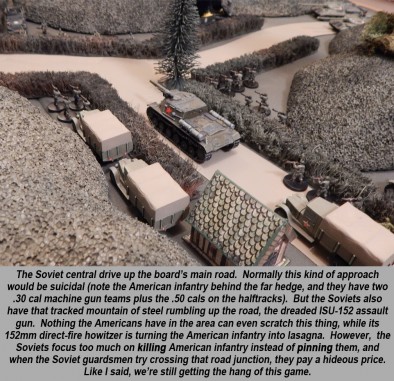
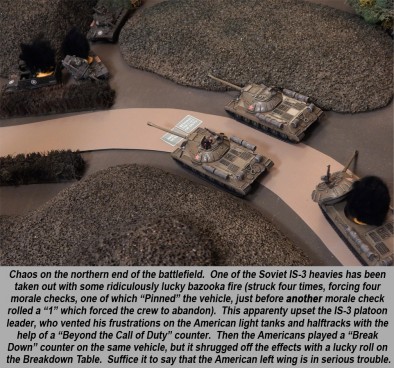
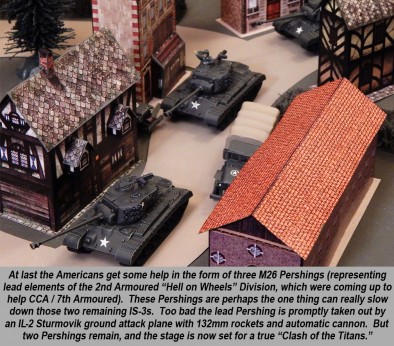

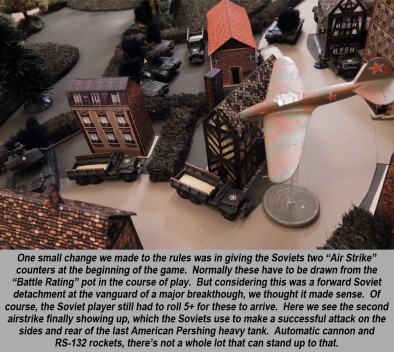


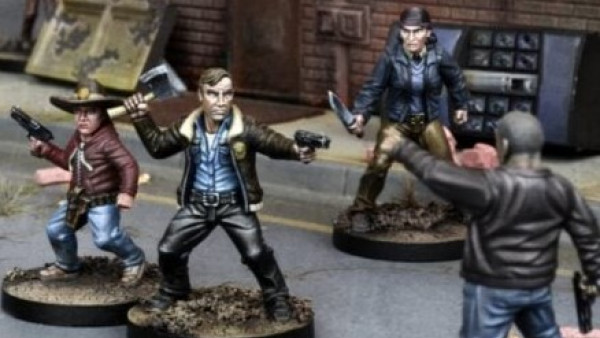


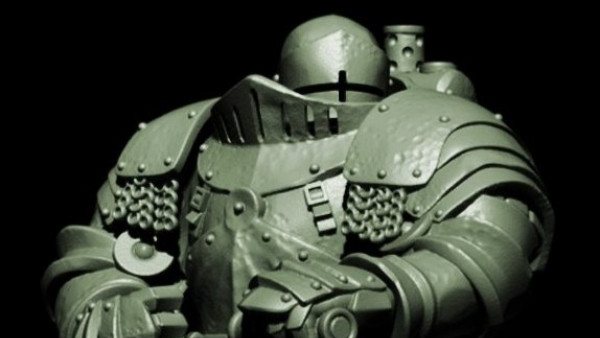
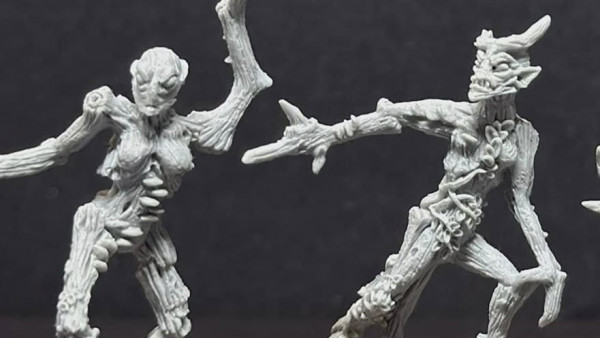
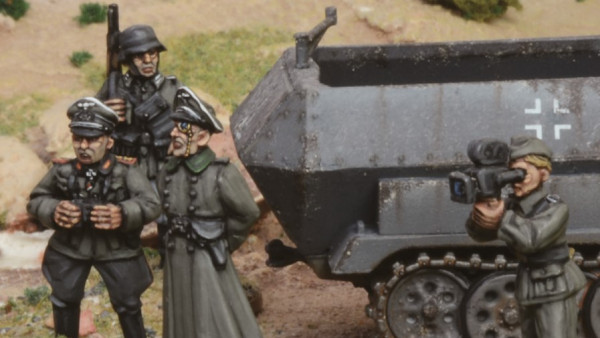
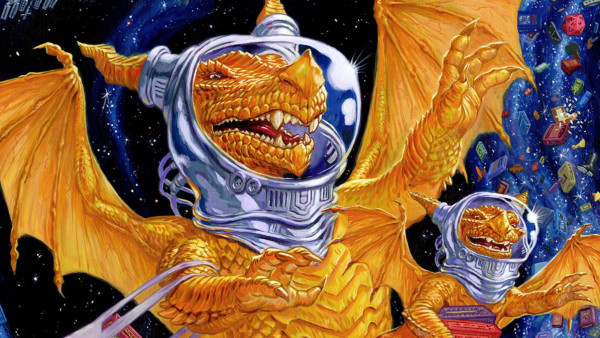
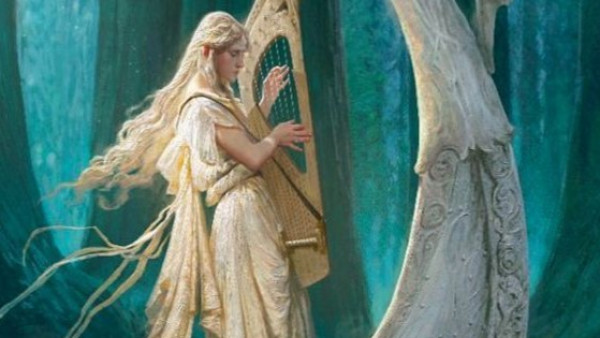
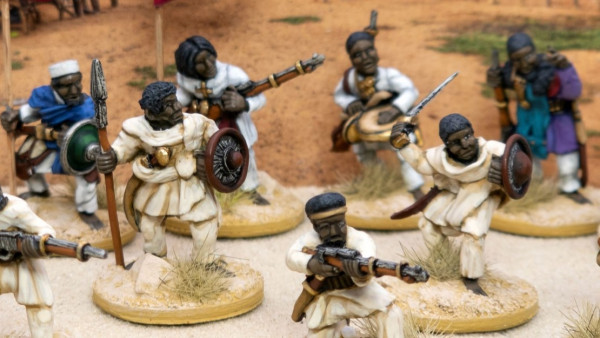
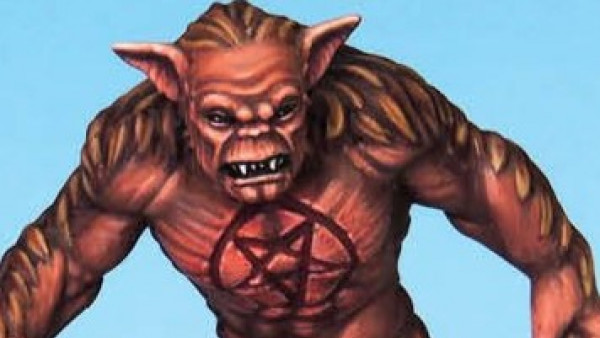
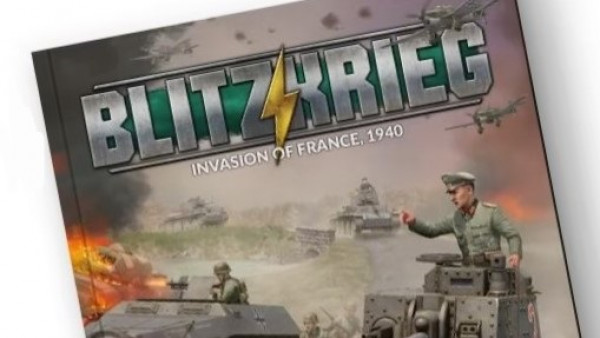
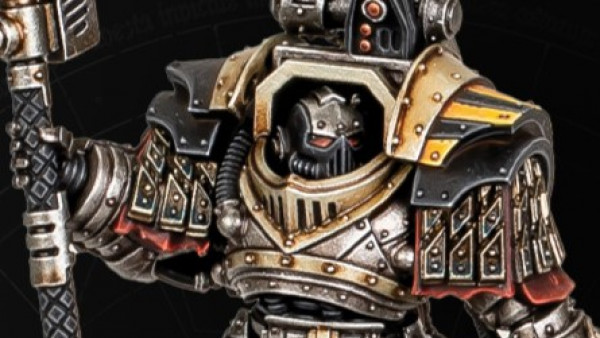
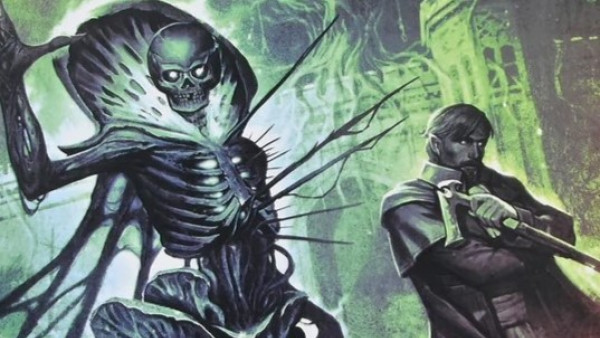
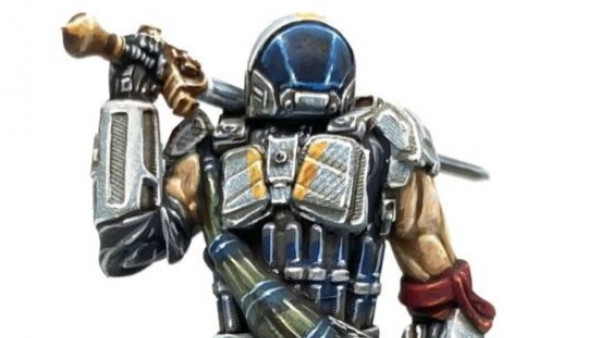

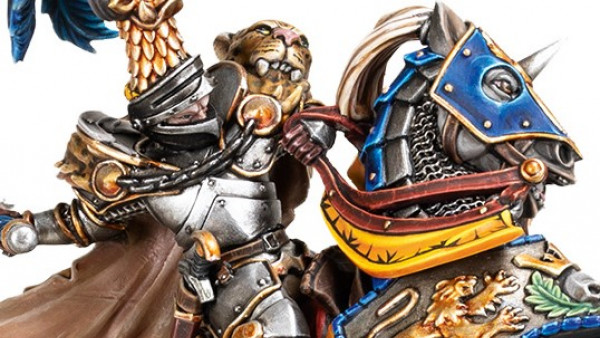

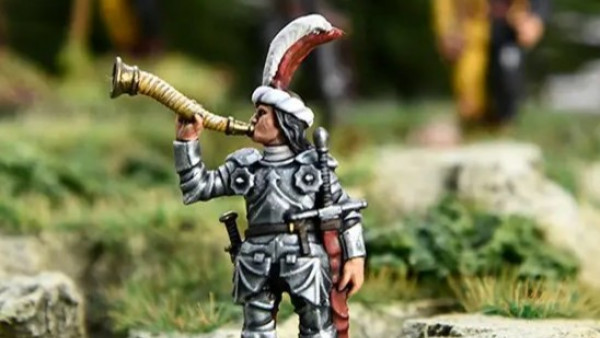

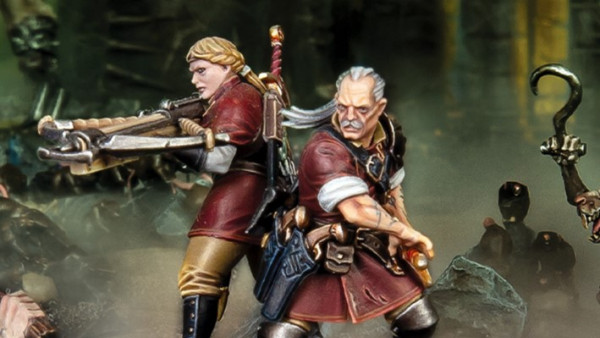
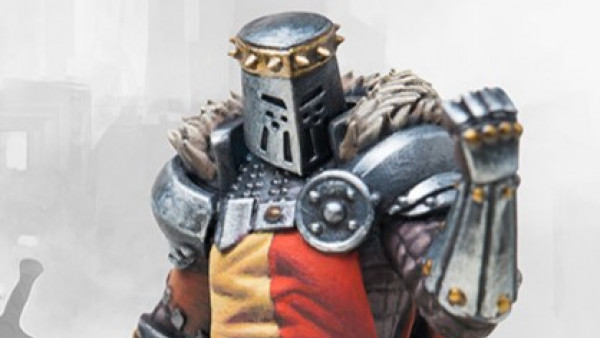


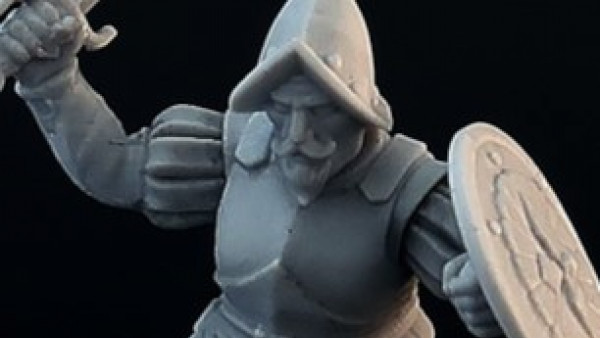

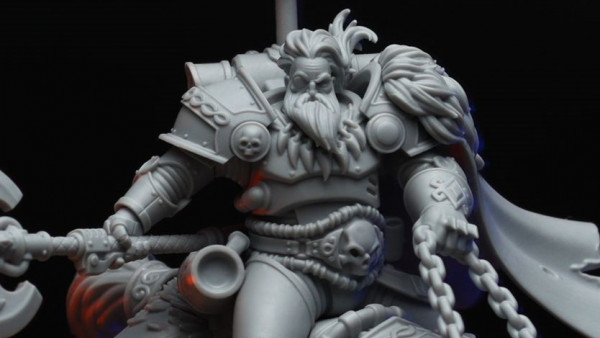

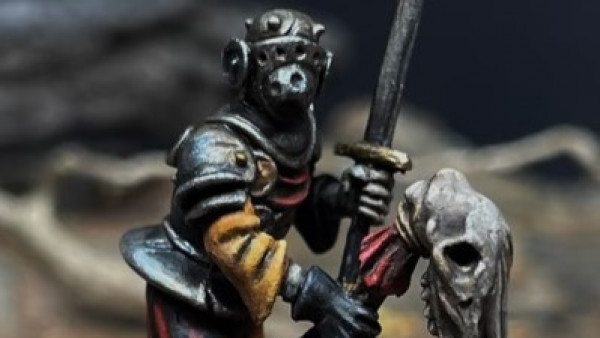

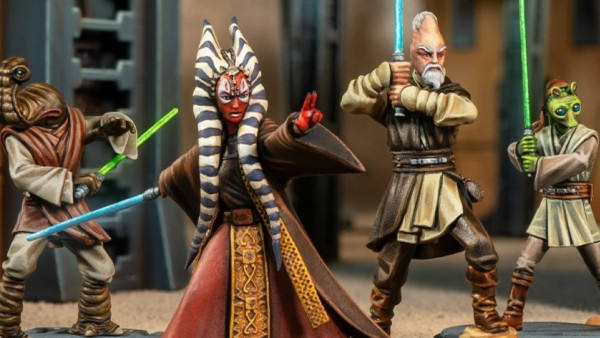
Wow. Very well done.
Ah, a post-war aggression campaign, a scenario sometimes referred to as “operation Unthinkable” after the Allied plans for just such an occasion developed in 1945. While some might think that the Soviets would have just steamrollered the Western Allies in such a campaign, the Red Army was also on its last legs by the end of the war, and many of their soldiers would also be needed to rebuild the Soviet economy. The end result would probably have been a conflict with smaller, more high-tech forces than WW2 on both sides, as depricted in this campaign. It offers some incredibly… Read more »
Thanks very much, @nsogre and @marqod . Glad you like it so far! Great question on the vehicles for the re-armed German units. This was a tough one, since of course we all want to see phalanxes of Panthers and Tigers once again rumble over Europe . . . this time as the “good guys” 😀 . . . probably with the new Bundeswehr-pattern “Iron Cross” insignia instead of the Balkan Cross of World War II. Honestly, another community member (jamesevans140) had the great idea that these German units would probably be armed primarily with hand-me-down American Lend-Lease equipment, not… Read more »
Not sure if I could ever get my head round German units even in pulp setting being ‘ The good guys’
You’re right, of course, @torros . Hence the “quotes.” We’re also keeping these units down to a pretty small role, both tactically and operationally. In a 60’s game, 50’s game, or even a 1948 game, things would be different, but just 13 months after VE Day?
didn’t ‘Unthinkable’ envisage that as many as 100,000 Wehrmacht troops could be raised to supplement the allies? My guess is that local German units would use whatever they could get there hands on until eventually they ended up kitted out like the regular allied troops… (depending on which sector they’re in). As @oriskany says, being part of a wider allied logistics network it’d be unfeasible to maintain parallel supply chains of allied and German manufactures, especially in the long term. Homogenize. Throw whatever we’ve got at Ivan until it becomes a war of production once again… Be a nice modelling… Read more »
@bigdave says: “Be a nice modelling challenge!”
Indeed. I’ve had great fun so far “modding” late- and post-war British armour. Now I’m starting a rag-tag handful of surviving German units. Shermans, maybe 1 StG-III, a Mark IV, a Hetzer, and maybe a Panther . . . all with the black “Iron Cross” Bundeswehr-pattern cross instead of the WW2 German “balkenkreuz.” 🙂
Nice work yet again mate. Impeccable timing – I just got my email stating that wave 1 of my Dust kick-starter was on its way. I’m certainly in the mood for some Allies vs. SSU action now. I just hope there is something in the box when I get it… 😉
Thanks, @wookiehair . 🙂 Games like Dust are one reason we’re trying to keep this project as “plausible” as possible. First, it’s what I know . . . 😀 . . . but also I didn’t want to overstep onto Dust’s creative territory, so to speak. I think Dust takes place in 1947 and if I made this too “Weird War 2,” people would be saying: “why doesn’t this guy just play Dust?” One of these days I’ll have to either try Dust or at least watch some Battlefield demo games. Something about a walker with an autoloading “88” built… Read more »
I agree, Dust is a very different thing (alien tech and all). Yours is a far more plausible alternate history and in some ways more interesting because of it. There is a fair degree of crossover though – they have rules for Pershings… but they come with phasers…
Oriskany, we should chat by email. We have stats for a lot of stuff for Battlegroup as 46 is a supplement we have planned…
That would actually be really helpful, @piers. I wouldn’t want to “spoil” any upcoming releases and would certainly keep anything confidential. At the moment we’re using the data cards and lists in Battlegroup Kursk (along with knowledge and comparative ratings of tanks, guns and equipment in other game systems) to extrapolate what we think these 1946 values would be in Battlegroup. We also have Fall of the Reich arriving this week, which I hope will get us much closer in verifying that our 1946 data cards would be correct. But nothing would beat getting it “from the horse’s mouth” so… Read more »
Super awesome stuff! It seems so rewarding to play at such a grandiose level as this.
Love the concept – love the time period – love the models and I love the AAR!
As mentioned in another one of your fantastic article series I just need to figure out how to get this much detail into a Fantasy campaign.
As always – keep up the good work and I’m looking forward to the remaining parts of this series!
Thanks, @stlwarrior . Glad you like it so far! Way, waaaaay back I used to game with a group of guys who also had very high-level D&D characters, to the point where they all had their own castles and fiefdoms, etc. Long story short, we came up with a way to do these high-level wargames in a Fantasy setting. I assume you’re talking about higher-level strategic games than all the great tactical options out there like Kings of War, etc. For me the hardest part was stacking high-level magic on top of the operational “military” mechanic. Really big spells like… Read more »
Those were the days – Seem to recall a misspent youth with that sort of stuff going on
If you EVER get a spare minute (which seems unlikely judging by all the work you do here and in your gaming group) I’d love to pick your brain on setting up a higher-level strategic fantasy game. And I promise that the magic will be kept to a minimum 🙂
And thanks again for sharing all this exciting work!
@stlwarrior – gimme 2-3 weeks to finish this project and let’s start a thread in the fantasy forum. Seriously, don’t let me forget. Start the forum and ping me on it. We’ll gets lots of great ideas from the community, too. I’ve gotten lots (and am still getting them, actually, even in this thread) for WW 2.5.
great start to the campaign! really looking forward to more,this looks like its gonna be a lotta fun to watch.
Excellent start, looking forward to the next episode.
Thanks, @bloodydrake and @gremlin . The next episode features some lighter (but much more numerous) Soviet armor and some British units!
Where do I begin? The operational level game looks and sounds fantastic. The minis are amazing. I’ve seen many of them already but I think this is my first look at your Stalin 3’s. (My 1:35 is a centerpiece of my collection) but these 1:100’s look awesome.
Glad to hear “Battlegroup” is developing into a cool mini system. Can’t wait to learn and read more. GREAT WORK!
Thanks, @amphibiousmonster . The operational-level game is just about there. We’re still playtesting to iron out victory points, strategic redeployment, levying reserves, and isolation (basics are all in place, but polishing details).
Oof, then I have to write it! But all the mapwork and counters are essentially done.
Oriskany
A reformed Eastern german army may be more Hetzer and katchen APC as that seems a direction they were pursuing. More logical for a reformed force with limited resources.
Plus in 20mm CP Models make 46 style Germans…
You know, @piers , I initially set aside the idea of an “East German” army, simply because (1) the Soviets didn’t really need any reinforcements, (2) they already have significant Polish formations that fought with them, and (3) the level of Soviet antipathy and mistrust of Germans would still be too high in 1946 . . . But . . . They DID have hundreds of thousands of German POWs in labour camps and gulags. Many were not released until the mid 50s. Maybe the Soviets would offer a deal, get out of the Gulag and sign up in our… Read more »
‘Polish’ is a strong word 😛 In Krakow, once the newly liberated locals began to mingle with the Polish troops, quite a few are believed to have been told ‘erm. we’re all from… Lodz… hence the Russian-sounding accents…’, that and the new looking insignia sewn onto quite old and tatty uniforms… All a bit suspicious. Not that it detracts from the incredible efforts made by the Polish/Soviet troops in freeing the place 🙂 Numerous German communists are believed to have tried to recruit German prisoners of war to no avail, eventually they ended up being flown into Germany in 1945… Read more »
Well, there were two”Polish Army” formations I found, the 1st Polish Army in 1st Belorussian Front and 2nd Polish Army in Koniev’s 1st Ukrainian Front. Each had five rifle divisions, the 1st Army had a Polish tank brigade and the 2nd Army had a Polish Tank CORPS. Now I have no idea how “Polish” they actually were, but when I was selecting which brigades/divisions/corps I would “keep in Germany” for 1946 (a vast, vast minority, believe me), a few of these Polish units were kept in for variety and color if nothing else. 😀 Wait until you see the composition… Read more »
Nothing but Morrocans and Senegalese I hope! 🙂
Russians would have loved to recruit the Poles en masse, but after the execution of the officer corps at the Katyn Massacre it became unpractical. If they couldn’t be led by there own, a lot of Poles just couldn’t be persuaded. Still a fair few no doubt, but not many veterans were left knocking about by 44/45… Ever heard of Wojcek the bear? Loads of Poles joined the British Army, even in my small down we had a population of Free Poles. Anyhow, after taking part in the Persian campaign, a Polish artillery unit adopted a bear as it’s mascot,… Read more »
Enjoying this shamelessly.
Well seeing as they already had the ‘Free’ German Army fighting for them in the war it would be likely to have been expanded especially with soviet losses.
Looking forward to the next installment of this
I love that you’re not getting bogged down in the would this have really happened? Could this have really happened? It didn’t but what could have happened if it did, is much more fun 😉
The buildings and boards look great. I can’t wait to see the final version of the division level game!
Thanks, @dorthonion . 🙂 Appreciate the feedback as always! One of these days we should work on a project together. Maybe I should be really mean, @piers , and have “East” Germans fight “West” Germans, much like the Free French and Vichy French who fought in Syria. Agree on Soviet losses. As Warren mentioned in the Weekender and I put in the article, the last thing I wanted was a “Red Steamroller” in the wake of so many Soviet deaths due to famine, war, purges, Five-Year Plans, etc. The Soviet armies represented in the WW 2.5 operational game are MUCH… Read more »
Vichy French were given the offer of fighting for De Gaulle after Syria. Instead they all took the boat home… Will need to check but the formation of the Soviet Occupation Forces in Germany was done pretty swift by July of 45′, I know that in May they disbanded literally dozens of Soviet rifle divisions, the two greatly reduced Belorussian fronts forming the basis, the Ukrainian front being broken up and sent all over the place. Let me do some reading, but sure by July the Soviets had pretty much set themselves up for the next 50 years in terms… Read more »
Thanks, @ramsus and @gladesrunner . Especially to Gladesrunner who is helping me playtest the operational game!! 😀
Playtesters don’t get enough credit in my view. Playing the same game over and over . . . while the other guy keeps changing the rules!
Both the design and testing “positions” are important and fun.
Certainly, @amphibiousmonster . The designer usually gets loads of credit, though, while the playtesters . . . not so much. Then again, their job is to literally play wargames all day. 😀 @bigdave – completely agree about the Soviet drawdowns. In building the rosters for WW 2.5, I basically tossed 250+ Soviet rifle divisions, independent brigades and regiments, and tank/mechanized corps. That doesn’t even count artillery, air assault, self-propelled gun units, guards mortar (i.e. rocket) regiments, “breakthrough” artillery divisions, etc. These I pretty much ditched wholesale. I probably have more forces than were in Soviet Group of Forces in Germany… Read more »
that’s the thing, soon as it got a bit hairy on the diplomatic front, odds are that those ‘disbanded’ units from the Ukrainian front would probably end up back in Germany again, very discretely bolstering areas of the line…
muhuhahehahehaaaa!! 😉
I was serving in the forces in the 80’s and 90’s and this was in the early part of my career, a very real scenario. We used to do border patrols on the ‘iron curtain’ . Great lengths of minefields and barbed wire and control towers. Being photographed and watched through binoculars by the East German/Russian security guards. I had a mate in a tank regiment who at the time were tasked as Recce and their job was to go ‘hull down’ and cam up at predetermined positions. Then allow the first wave of attacking forces to go past them… Read more »
Seen plenty of Harrier ops during my USMC days . . . or at least the “Americanized” version.
In another related thread we’ve been talking about a lot of the writing on the 1980s version of this scenario. Ralph Peters’ “Red Army” – Sir John Hackett’s “Third World War; August 1985” – Harold Coyle’s “Team Yankee”, etc.
This is a great concept for a wargaming setting @oriskany. I look forward to seeing how it develops over future articles.
What a great job, Oriskany!
Knowing that I admittedly stink with historical details, this concept speaks wonders to the possibilities that exist in gaming- especially when someone doesn’t have the facts holding them back from exploring the “what if” scenario. The table looks amazing and the concept has my attention. Keep up the great work!
Thanks so much @vetruviangeek and @deltagamegirl22 . It’s always great when we get posts from gamers who usually prefer other genres. Sooner or later we will have you all converted to the Dark Side . . . Mwahaha! . . . Just kidding. 😀
It has already begun. I am developing yellow irises and an obsessive interest in the specific stats of period armoured vehiocles. Can a red lightsabre and reproduction WW2 uniforms be far behind…? 🙂
I name you . . . Daaaaarth Historicus ! Once more the Sith will bore people at conventions across the galaxy!
This may be me being blind but how/where do you make your hex maps as I need to produce some for a game to get some friends interested. As always a really interesting series.
@teabaron – I make all my own hex maps, mostly with Photoshop 14. A Wacom / Bamboo stylus pad definitely helps but I suppose is not required. I download the best quality hex grid I can find, drop it over my background imagery, and erase all the white from the hex grid layer with select/delete to create a “transparent” hex grid. Towns, rivers, mountains, borders, etc., are all separate layers / vectors in the Photoshop file as well, enabling individual editing. Successive compressed “finals” of the map are saved as .jpgs and inserted into . . . of all things… Read more »
That is a great help thanks and I am looking forward to the next instalment
Don’t… think… I’ve actually said it yet but great work @oriskany, this could really get people going!!
Great job @oriskany. Brits, yay! Looking forwards to seeing a couple of A43 Centurions in the next show.
Thanks, @bigdave and @elaric . Brits are indeed in next article, and I promise Centurions will be featured before the end of the series. 🙂
Great stuff. This kind of game also has the advantage of avoiding all the unpleasant awkwardness that some people can feel playing historical games, particularly when one (or more!) sides were really pretty awful. Of course, when you’ve gone to all this effort to enable you to field ahistorical formations of super-heavy tanks etc., I am left wondering… Why have you just got a squadron or two on each side? Even if both sides have shrunk their armies considerably since the real war… Don’t you want to play ‘Kursk’ type battles but with all the coolest kit? 🙂
Funny you should say that . . . I’m finishing the second article now and have characterized the first big Fulda Gap tank battles as “almost Kursk-like.” But you’re right, these battles are a little small, and there are a number of reasons: 1) The miniature battles are only supposed to represent the very smallest fractions of the big division, corps, and army-sized engagements taking place on the hex board. So, in a way, the really big battles ARE taking place. 2) Trust me, I would LOVE to put dozens of IS-3s and Pershings against each other in a big… Read more »
Yeah, all good reasons I suppose. There’s just something about miniature wargaming that brings out the megalomaniac…
Looking forward to part II.
baby steps WW II.5 next year Kursk II then @oriskany
Wouldn’t that be cool, @zorg ? People would have to lend me hundreds of 15mm vehicles, though. I could rent a small warehouse or out-of-business restaurant or something to set up a 30-foot by 30-foot floor (couldn’t be a table, obviously), and we can do one of these big battles justice!
you can see if you could do it at the BOW studies? if you get the vehicles that is.
@zorg – That one big room they have does seem like it might be big enough. 🙂
you verses john the BOW Kursk?
@zorg – Maybe if I can trick @johnlyons into playing the Soviets. I have a feeling he has way too much experience playing Germans. I’m pretty much 50-50 on playing Germans and Russians, so if I can trick him into playing what MIGHT be his weak hand, I might stand a chance. 😀
Hi @oriskany before you start I would recommend you to watch this movie, Americans knew every move Russians planned in late Cold war. Also I would guess that there would be bigger upraise in Poland because in that time Armia Krajowa was still fighting in occupied Poland if there would be war against america I bet There would be more people joining in. We would never fight against Allies.
http://www.imdb.com/title/tt2785288/ jack strong – it shows great tension during cold war.
Maybe you’re right, @radegast6 . Maybe I’ll take these Soviet-aligned Polish units out of the roster. Originally I put these in there because, like I said to @bigdave , I see TEN Polish rifle divisions just in this PART of the Red Army, that’s something like 180,000 men including support troops. I just wanted to make sure everyone who might have been there was represented, irregardless of which side they were on. Then again, bigdave has information that suggests these “Polish” units may have been a lot less “Polish” then their divisional titles suggest. Either way, maybe their inclusion isn’t… Read more »
Amazing work @oriskany ! As @radegast6 mentioned, after the “liberation” of Poland by the Soviets, many Polish Home Army members continued to fight against the Sovietization of Poland, some well into the 1950s. Perhaps you could include in the campaign some skirmish-level scenarios of Polish partisans attacking Soviet communications, rail, supply depots, or other installations?
That’s actually a great idea, @lblunchboxlb . There’s actually a mechanic that might support that idea already baked into the WW 2.5 game (albeit it an abstract manner). A skirmish “resistance” or “partisan” game would add variety to all these miniature tank battles, and give me a chance to highlight these other aspects of the WW 2.5 operational-level game.
Thanks for the idea. If I get a chance to use it, I’ll be sure you and @radegast6 get mentioned in the article (probably part 3 or 4). 😀
people do tend to say yes if someone has a gun pointed at them so they may not have had much of a choice to not join the army.
Oriskany a very well written part 1 to WW2.5 really enjoyed reading it, it has a very cold war feel to it, but in a yester year setting, if you know what I mean, brilliant. You have handled the “What Ifs” nicely, with the backdrop to the whole scenario. I suspect that there will be faster moving assets showing themselves soon to bypass and push on. As like in “Wacht am Rhein” time would not be on the Soviet side, as it was not the Germans. Logistics, or maybe a unhappy neighbours between the front lines and the USSR, will… Read more »
Thanks, @y51c – “Faster-moving assets to bypass and push on” – Indeed. One reason I boiled down the size of the armies was to open up the battlefield to more fast maneuver. The Allies do not have enough divisions to build a shoulder-to-shoulder defense and once the Soviets smash up one or two strong points (cities), big gaps are almost inevitable through which Soviet mechanized and lighter tank formations can pour. Then again, as the Soviets push in divergent directions, gaps open up in their lines as well. and before you know it British or American divisions are across the… Read more »